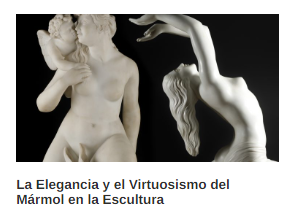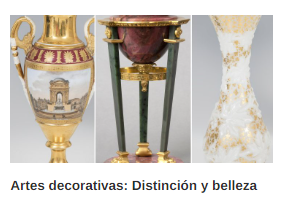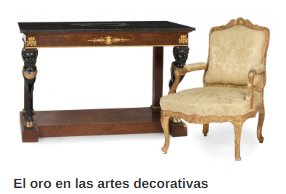From Functionality to Art: the dignity of home furnishings
Setdart brings together an important selection of furniture

It is not usual that in the same auction we are able to go through the evolution of storage furniture and understand its adaptations to domestic needs. From the Gothic period to the period of Tous les Louis, both the conception of furniture and its appearance changed drastically, abandoning itself to new concepts such as comfort or mere formal elegance.
Since its beginnings, the northeast of the peninsula has been one of the most important centers in terms of furniture. The lot 35346498, a 15th century Catalan Gothic chest is a paradigmatic example of furniture that was, until the 16th century, a mirror of the status of its owners. With a large truncated pyramidal molded base, they are characterized by a structure of boards assembled with exposed dovetail ties, on which moldings simulating a frame are applied, as well as combs under the top. The front, made up of two or three panels (lot 35346500), presents what is possibly the hallmark of the coffers made in Barcelona, that is, a carved central false upright, openwork and applied according to the technique known as “Barcelona work”.
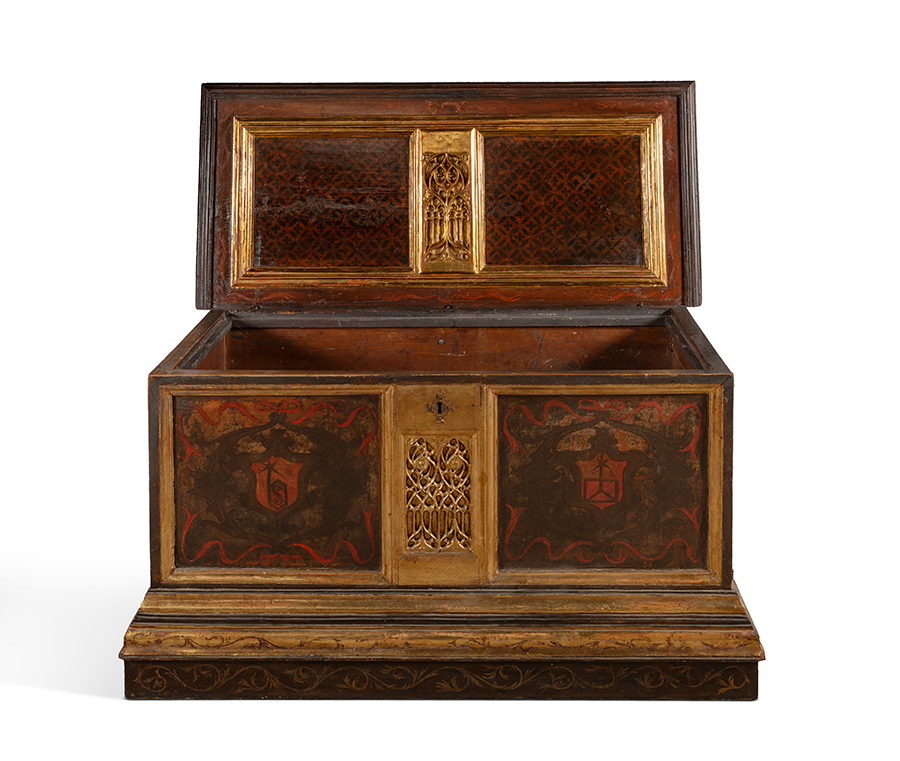
Already in the 16th century, the lot 35346501 speaks of this new typology that was to become the most representative piece of furniture of the Renaissance and Baroque periods: the writing desk. Although, especially at the end of the seventeenth century, the main function for which they were conceived passed to a second plane, enjoying an almost exclusively apparatus character, they were born as a sort of filing cabinet where the lords deposited the matters they were dealing with in the present. The desk in question, datable to the second half of the 16th century due to its Mannerist carved reliefs -which may remind us of those on the façade of the Sacred Chapel of the Savior of the World in Úbeda-, has a hinged lid on its front, which would be lost in subsequent decades in pursuit of pomp and circumstance.
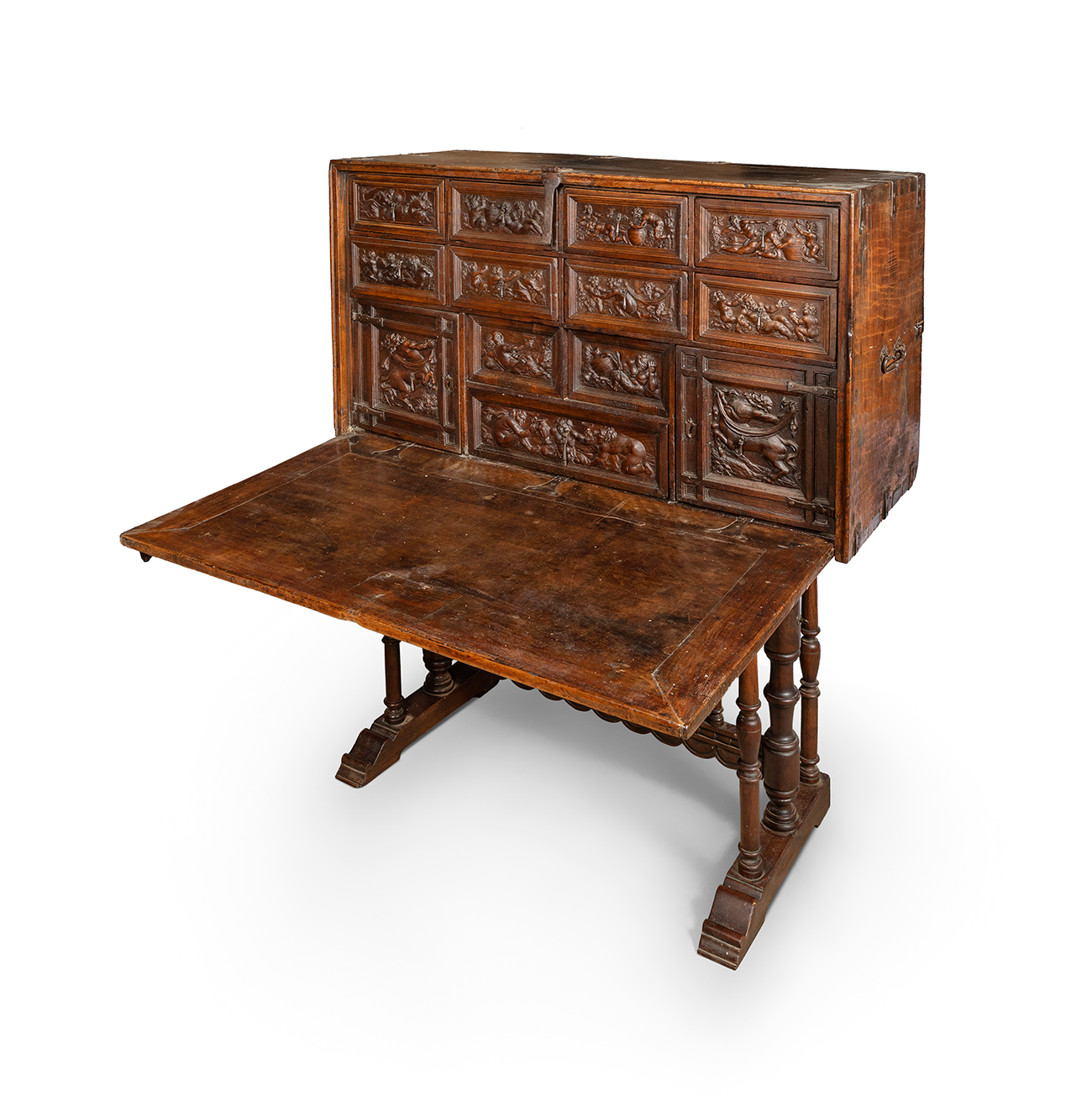
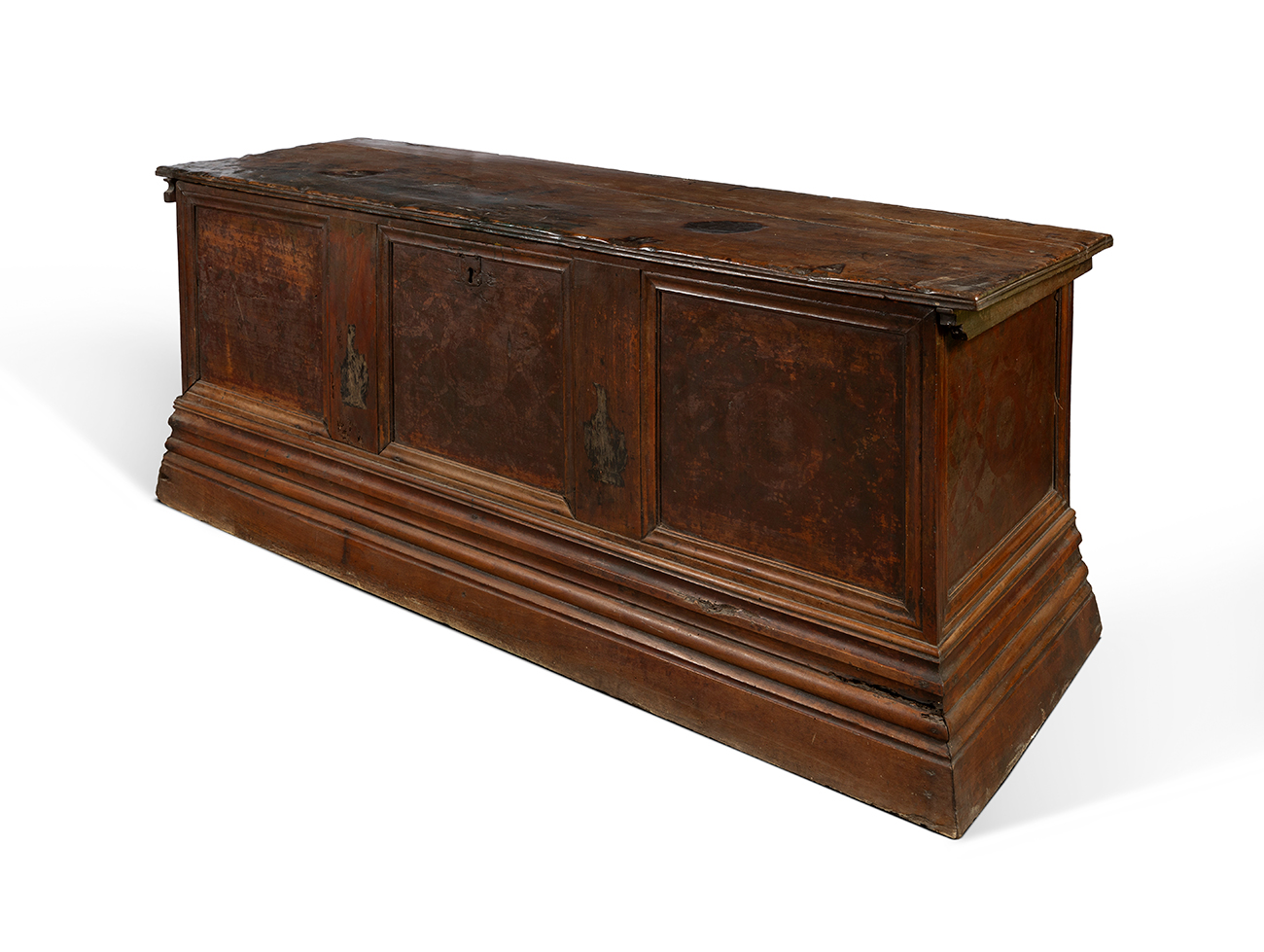
A new revolution took place in the mid-seventeenth century, as one piece, the chest of drawers, would take center stage from 1730 onwards, combining the symbolism of the desk and the functions of the chest and the trunk, although structurally it is indebted to the sacristy chest of drawers.
The lot 35346503, from around 1700, when the typology was still in the process of assimilation, allows us not only to see how the variant with hinged top was another of the paths that the furniture originally took, but also to understand the relations that took place between Italy and Spain. That curve and counter-curve drawn by the fillets made of lemongrass wood at the ends of the drawers can be seen in Catalan pieces, not necessarily chests of drawers, but desk tables, which can easily be confused with their Italian counterparts or vice versa.
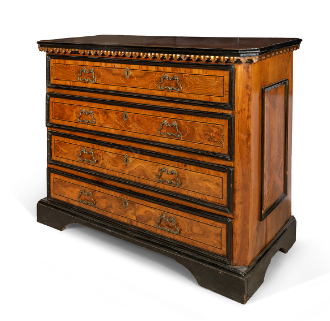
Moving on to the 18th century, it is curious to see the differences that can occur in two pieces possibly made in the same decade: the lot 35346499 and 35346505. The first is an Italian commode, from the Veneto region, from the last quarter of the eighteenth century, whose crescent profile, marquetry work and handles frame it within a neoclassical style; on the other hand, the second is a Catalan cabinet from the historical region of Empordà, of full rococo character, dated 1782, perhaps built as a wedding gift to the spouses whose initials are engraved under the top, this being topped by a pomegranate, symbol of fertility.
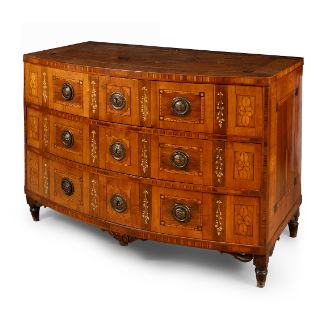
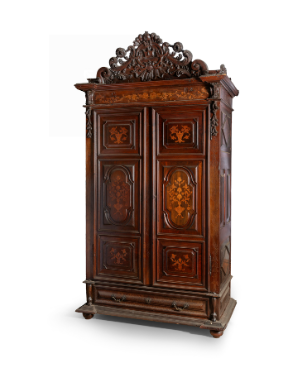
Artistic trends were therefore slow to travel far from the main centers, such as Venice, where the recent neoclassical style was already fully assimilated, while in the Empordà, far from the cosmopolitan Barcelona, and close to the nineteenth century, a rococo style was still in force, whose rock carvings had been reviled by the Catalan high spheres for years.
Finally, the 19th century, perhaps without the need to reinvent itself, opted to mix all the styles developed in previous centuries, in a sort of eclectic amalgam that, hand in hand with industry, produced incessantly. The lot 35248722, a mezzanine by Jean-Louis-Benjamin Gros from around 1850, combines, in this sense, the ornamentation of Louis XVI, with a timid concavity on the sides that brings that movement that was dispensed with in the late 18th century.
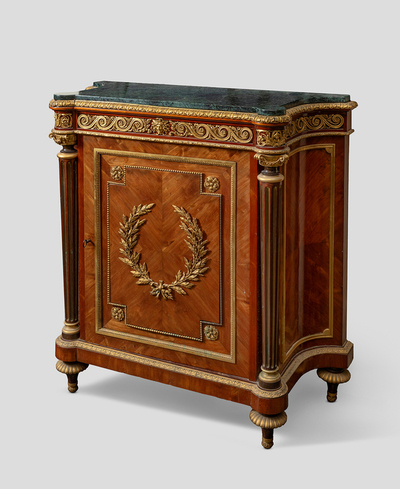
There are more pieces to keep that complement the above mentioned, disparate typologies from different centers, with an extraordinary quality that make this tender a good opportunity to get a piece of the history of European furniture.

